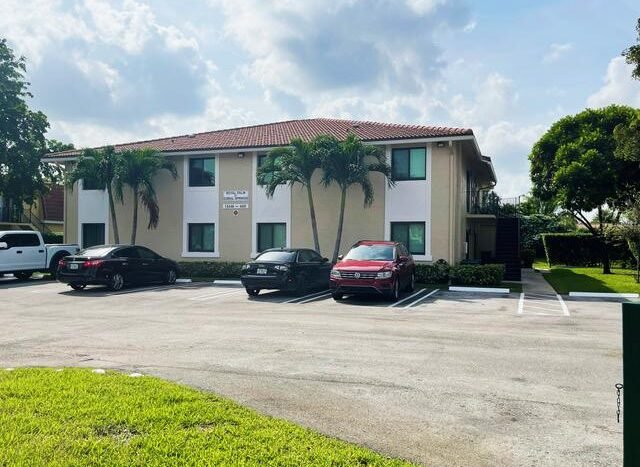What Should You Look for When Buying Multifamily Real Estate?
Multifamily Real Estate investments in South Florida offer property owners a hedge against inflation and value-added capacity. With a booming economy, job market, and urban centers, it’s crucial to know what to look for to secure a profitable investment.
The Martinez Team, a trusted commercial real estate broker, provides a guide on what to look for when buying multifamily real estate.
Location
The neighborhood’s location appeal significantly impacts asset value and tenant quality. Nearby amenities and services, such as educational institutions, recreational facilities, and public transportation, increase demand and rent premiums. Analyze historical data and projections, look for areas with growing populations, employers, and infrastructure projects. Safety is crucial, and scouting local crime data and community perception can help assess potential risks and rewards of a property in that area.
Property Condition
Multifamily real estate property investing in South Florida is primarily based on the property’s structural and functional integrity. The age of a building can indicate its lifespan and potential challenges, while older buildings may attract niche tenants and increase property value. The quality of construction is crucial in older buildings, as they face extreme storms. Recent renovations and repairs indicate the property’s maintenance. Updated heating, cooling, electrical, and plumbing systems also contribute to tenant satisfaction. The exterior and common areas, such as landscaping, parking facilities, common hallways, and shared spaces, also influence the living experience and market rent. When searching for a turnkey investment, it’s essential to find properties that are not only attractive but sound throughout. For value-add projects, searching for a diamond in the rough is the best chance at a deal.
Value-Add Capacity
How can you enhance a property’s performance or income to increase its overall value?
- Property renovations that directly link to higher rental rates.
- Look for areas where impactful modifications, such as kitchen updates or energy-saving installations, will increase the property’s market rent.
- Operational efficiency changes.
- Enhancing your tenant caliber and stability, which dictates revenue consistency.
- Look for properties that you can improve either through strategic management, capital expenditure, or improving tenant profiles.
Cap Rate (Capitalization Rate)
The capitalization rate, or cap rate, measures an asset’s potential returns or price by dividing annual net operating income by property acquisition cost. Market cap rates vary based on economic and local conditions. To add value, secure a property with a higher cap rate and sell it at a lower cap rate. Compare the cap rate with other properties in the area and similar conditions to determine if the seller’s asking price is fair, competitive, or overpriced. Look for competitively priced multifamily investments reflecting the asset’s fair market value.
Debt Servicing
Factors to consider in when evaluating finance options include:
- The LTV ratio, which represents the proportion between the loan amount and the property’s evaluated worth.
- A lower LTV often suggests greater equity ownership, providing a cushion during market downturns.
- Opportunities for future refinancing.
- Continual assessment of the credit market allows investors to identify potential refinancing avenues.
- Look for properties that meet your debt requirements and with a purchase price that sits comfortably within your tolerable LTV.
Operating Expenses
Properties with high operating expenses can present opportunities for improving operational efficiencies. However, their costs also need to be considered when calculating cash flow and potential ROI.
Operating expenses to consider include:
- Mortgage interest
- Property taxes
- Insurance
- Utilities
- Maintenance and repairs
- Property management fees
- Vacancy allowance
- Legal and professional fees
- Advertising and marketing
- Turnover costs
- Security
- Administration
Evaluate a property’s income or operating statements to identify fixed and fluctuating costs. Effective expense management improves performance, but requires adaptive planning and understanding property needs. Benchmark similar assets’ costs and conduct comparative analyses to gain operational efficiency insights. Investors can enhance asset profitability by segmenting expenses, discerning patterns, and benchmarking against market standards. Strategic changes can reduce overall costs and improve property performance.
Tenant Profile
Understanding tenant profiles in property evaluation provides valuable insights into asset performance, including longevity and payment track records. These parameters indicate rental income stability and potential tenant relationship management. Choose properties with market rents or tenants who can bring up market rent.
Exit Strategy
Forward-thinking is crucial in real estate investments, including acquisition and management, as well as exit strategies. This involves assessing potential resale avenues, estimating future property valuation, and gauging market liquidity. Strategic multifamily real estate investing in South Florida requires a deep understanding of property characteristics and metrics. Success in the market is tied to informed decision-making and a forward-thinking approach. The multifamily sector presents opportunities with potential but requires diligence and insight.
The Martinez Team’s deep understanding of the South Florida market and the necessary steps to acquire profitable multifamily investments is your greatest asset in your search.





